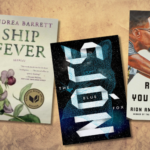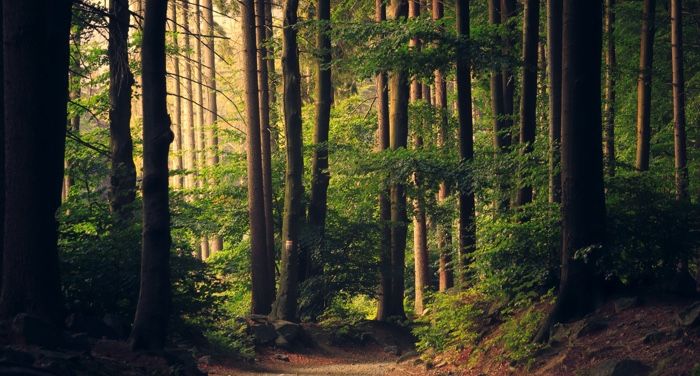
10 Books for Your Intersectional Environmentalist Reading List
As a climate activist, I know that racial and social justice are intrinsically linked with environmentalism. You cannot fight climate change without fighting for social change. To link those two ideas together, I’m going to recommend some intersectional books about the environment!
First, an intersectional environmentalism definition. Leah Thomas of @greengirlleah said it best when she defined the term: “an inclusive version of environmentalism that advocates for both the protection of people and the planet. It identifies ways in which injustices happening to marginalized communities and the Earth are interconnected. It brings injustices done to the most vulnerable communities, and to the Earth, to the forefront and does not minimize or silence social inequality. Intersectional environmentalism advocates for justice for people and planet.”
Second, I want to address that I am a white writer with white privilege compiling these resources. But I believe very much in this important environmental issue, and want to use any platform I can to amplify the voices of Black, Indigenous, and all people of color. Additionally, Book Riot has compiled a list of 50 Black-owned independent bookstores you can donate, order, and shop at today.
Intersectional Books About the Environment
Black Faces, White Spaces: Reimagining the Relationship of African Americans to the Great Outdoors by Carolyn Finney
African Americans are drastically underrepresented in the outdoor recreation and environmental industries, in every aspect from the visual, things like brand advertisements, to the very serious issue of not feeling welcome in outdoor spaces like trails. Carolyn Finney explores the historical legacies of slavery, Jim Crow, and racial violence and the ways they have shaped who has access to the “great outdoors” today.
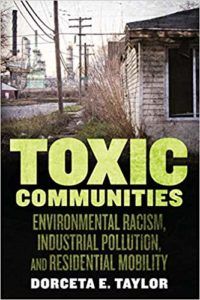 Toxic Communities: Environmental Racism, Industrial Pollution, and Residential Mobility by Dorceta Taylor
Toxic Communities: Environmental Racism, Industrial Pollution, and Residential Mobility by Dorceta Taylor
Poor and minority neighborhoods are disproportionately affected by pollution, and they are already facing the serious effects of the climate emergency today. These communities are more likely to be exposed to environmental hazards, and as a result are more likely to suffer from chronic disease and other health crises. Dorceta Taylor shows how these communities were intentionally and systematically exposed to these hazards through segregation, zoning policies, and redlining, which is environmental racism.
A Terrible Thing to Waste: Environmental Racism and its Assault on the American Mind by Harriet Washington
This book examines the consequences of those environmental hazards that disproportionately impact communities of color. The health effects of environmental racism are serious. These communities suffer from bad nutrition, deficient prenatal care, heavy metal in the soil, poor quality drinking quality, and more. Harriet Washington examines how these conditions impact the long-term health and psychology of these communities.
Clean and White: A History of Environmental Racism in the United States by Carl Zimring
Disclaimer: Carl Zimring is a white writer and environmental historian. This book explores the history of coded language and institutionalized racism that implies white people and communities are “clean” and “pure,” compared to communities of color. He further examines the way these dysfunctional attitudes play into waste management, environmental policy, and the real lived experiences of environmental racism in the United States.
There’s Something In The Water: Environmental Racism in Indigenous & Black Communities by Ingrid Waldron
For a Canadian perspective, this book explores the legacy of racism, and the impact of environmental racism in Nova Scotia. Waldron draws links between colonialism, police brutality, economic inequality, and more. She also explores the class and race issues within the Canadian environmental advocacy movement—this is an international problem, but she uses Canada as a case study—and the way indigenous Mi’kmaq and Black voices are silenced while white voices are centered.
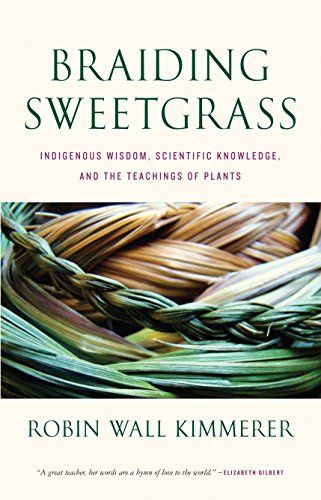 Braiding Sweetgrass by Robin Wall Kimmerer
Braiding Sweetgrass by Robin Wall Kimmerer
Robin Wall Kimmerer is a scientist, professor, and member of the Citizen Potowatomi Nation. This book is full of both indigenous wisdom, nature writing, and science. One of the most striking takeaways from this book is that humans have a role to play in restoring our natural world and stopping the climate emergency—that we are not separate from nature, we are part of it. After all, indigenous communities lived in complete harmony with nature for centuries before colonizers attempted to strip it all away.
This book demonstrates that their wisdom and traditions can lead us to a regenerative environment, but we have to allow the remaining bearers of this traditional knowledge to lead the way.
From the Ground Up: Environmental Racism and the Rise of the Environmental Justice Movement by Luke Cole
Black and Indigenous communities have long led grassroots efforts to fight environmental racism in their own communities. This book is about the grassroots activism and political mobilization that led to the Executive Order on Environmental Justice in 1994, a policy intended “to focus federal attention on the environmental and human health effects of federal actions on minority and low-income populations with the goal of achieving environmental protection for all communities.” This effort was one of the fastest growing social justice movements to gain real recognition for issues of environmental racism and justice on a federal level.
Rooted in the Earth: Reclaiming the African American Environmental Heritage by Dianne Glave
Contrary to the institutionalized belief that African Americans are “disconnected” from nature, and thus sustainability, this book reclaims the history and connection Black people have to the nature and the Earth. It explores the ancestral knowledge and skills that were the lived experience of Black people throughout history. It travels to the African homeland, examines the farming techniques Black people used to survive slavery and Reconstruction, and explores the ways Black people are incredible—and essential—environmental advocates for their communities today.
As Long as Grass Grows: The Indigenous Fight for Environmental Justice, from Colonization to Standing Rock by Dina Gilio-Whitaker
Dina Gilio-Whitaker is an Indigenous activist who wrote this book to demonstrate that Indigenous wisdom is a crucial part of building a more sustainable future. She outlines the ways this wisdom has historically been erased, both by colonization and by the white mainstream environmental movement.
This book covers a lot of history in terms of land rights and sovereignty between the United States and Natives. The contemporary history is largely focused on Natives involvement with the environmental movement from the 1970s forward, and the ways that relationship is complex. Gilio-Whitaker covers both the ways the environmental movement has marginalized Native voices, and examples of both people working together successfully and collaboratively, so it is a very constructive approach all environmentalists should read.
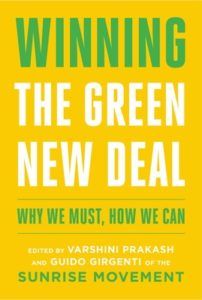 Winning the Green New Deal: How We Can and Why We Must by Varshini Prakash and Guido Girgenti (August 2020)
Winning the Green New Deal: How We Can and Why We Must by Varshini Prakash and Guido Girgenti (August 2020)
From a policy perspective, the Green New Deal is the proposed governing fabric to combat “the interwoven crises of the climate catastrophe, economic inequality, and racism.” Basically, the Green New Deal is the governing version of putting intersectional environmentalism into practice because it ties together climate action and social justice.
There are many books about the Green New Deal, and I have written about some here, but this book in particular addresses the need to form a diverse and inclusive political coalition, in order to link these three societal issues and create change.
After reading any of the books on this list, you will understand that it is essential to dismantle systems of oppression, and environmental racism. It is not possible to be an environmental activist without understanding that the environmental movement has marginalized certain voices. As a reader, it’s important to read those perspectives and understand intersectionality, in order for important environmental work to succeed.
Check out other Book Riot articles which recommend reads on climate change and social justice movements!







